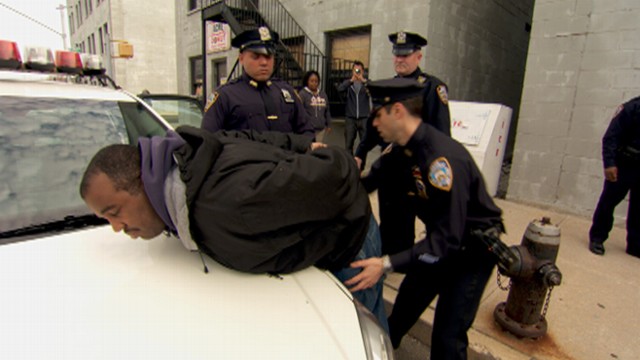
Here’s an interesting case out of Whatcom County.
In State v. Feely, the WA Court of Appeals held that a defendant convicted of Attempting to Elude a Police Vehicle also faces sentencing enhancements under RCW 9.94A.834 when an officer who deploys spike strips is endangered.
Shortly after midnight, Trooper Travis Lipton was parked in an unmarked vehicle on the shoulder of the northbound on ramp to Interstate 5. A pickup truck driven by defendant Thomas Feely passed very close to Trooper Lipton’s car while merging onto the freeway. Trooper Lipton saw the truck drift into the left lane before returning to the right lane. He followed Feely.
Once Trooper Lipton caught up to Feely, he started his car’s audio and video recording system. He observed Feely drift “back and forth within the right lane continuously,” and cross the fog line and the “center skip line” dividing the two lanes. After Feely failed to signal a lane change, Trooper Lipton activated his siren and emergency lights.
Feely continued northbound. Trooper Lipton advised dispatch of Feely’s failure to stop. Feely took the next exit and ran the stop sign at the top of the exit ramp. Feely continued on the two-lane road, greatly exceeding the speed limit and drifting “over onto the oncoming lane frequently.” He bypassed two cars that slowed or stopped as a result. Trooper Lipton requested dispatch contact other troopers to deploy spike strips.
Police set up a spike strip, but Feely went around it. Sergeant Larry Flynn set up another spike strip. Feely attempted to drive around it but “immediately locked up” his brakes. He “slid almost the whole way” towards Sergeant Flynn and stopped just short of where Sergeant Flynn was standing. Feely then “started to jerk forward” towards Sergeant Flynn by the side of the road. Sergeant Flynn released some slack on the spike strips so he could get farther off the road. Feely ran over one of the spike strips with his front left tire and sped away. Trooper Lipton maintained his pursuit.
After turning down a private driveway, Feely drove his truck into a swamp. He ran into the woods, leaving one shoe behind in the mud. More police officers shortly arrived, and after searching with two police dogs, they found Feely hiding in a tree. He had no shoes on and his clothes were wet. The officers took Feely into custody and smelled alcohol on his breath.
Trooper Lipton took Feely to a hospital. About an hour later, Trooper Lipton collected Feely’s blood, which registered a blood alcohol level of 0.13.
The State initially charged Feely with one count of Felony Driving Under the Influence (DUI) and one count of Attempting to Elude a Pursuing Police Vehicle with an endangerment sentencing enhancement. The State later amended the information to allege an aggravating circumstance under RCW 9.94A.535(2)(c) because Feely had committed multiple current offenses and his high offender score results in some of the current offenses going unpunished.
At trial, Feely stipulated that he had four prior qualifying convictions, elevating the DUI to a felony. The jury found Feely guilty as charged. In a special verdict, the jury also found that a “person, other than [Feely] or a pursuing law enforcement officer, was endangered by Feely’s actions during his commission of the crime of Attempting to Elude a Police Vehicle.”
The trial court sentenced Feely to 60 months for the felony DUI. The court sentenced him to 29 months for attempting to elude, plus 12 months and one day for the endangerment enhancement. The court ordered “all counts shall be served consecutively, including the portion of those counts for which there is an enhancement.” The court imposed this upward exceptional sentence after expressly finding that Mr. Feely committed multiple current offenses and the defendant’s high offender score resulted in some of the current offenses going unpunished.
Feely appealed. One of his arguments was that the prosecutor misstated the law when he argued the jury “could find Feely endangered someone other than himself or a pursuing police officer if it found he endangered the officers who deployed the spike strips.”
However, the Court of Appeals disagreed. It reasoned that the prosecutor did not misstate the law in arguing that the jury could consider Feely’s endangerment of the spike strip officers for the sentencing enhancement.
The Court also reasoned that multiple, corroborating facts identified Feely as the driver of the truck, consequently, compelling evidence supports his convictions:
Moreover, Feely’s crime was captured on Trooper Lipton’s vehicle’s video recording system and admitted at trial. This video showed one driver driving a truck registered to Feely’s parents. The officers testified that they followed Feely down the private driveway, where they found his truck stuck in a swamp with the driver side window partially rolled down and the driver side door ajar. The passenger side door was closed and an expired Washington State identification card belonging to Feely was in the center console. The officers also testified that they heard what “sounded like one person” “making his way through the brush and the sticks,” and that they did not hear any sounds coming from any other direction. Moreover, police dogs, who arrived within five minutes of finding Feely’s truck, were able to locate him hiding nearby in a tree. These dogs led the officers to the same tree. Feely smelled of alcohol, and several hours after the incident, had a blood alcohol level of 0.13.
Additionally, the Court of Appeals rejected Feely’s argument that the Prosecutor’s minimization of the State’s burden of proof here was improper. It reasoned that the prosecutor here never implied the jury had a duty to convict without a reason to do so or ever suggested that the burden of proof shifted to Feely. “In context of the total closing argument, we conclude the prosecutor did not trivialize the State’s burden.” Consequently, and because Feely did not object at trial and fails to establish any resulting prejudice, the Court decided Feely’s claim fails.
Finally, the Court of Appeals concluded the trial court properly imposed an exceptional sentence based on Feely’s high offender score: “Under the Sentencing Reform Act of 1981, chapter 9.94A RCW, the sentencing range increases based on the defendant’s offender score, up to a score of 9.59. Based on Feely’s offender score of 14 for each count, he faced a 60–month sentence for the felony DUI conviction alone.”
Please contact my office if you, a friend or family member are charged with a crime. Hiring an effective and competent defense attorney is the first and best step toward justice.


















